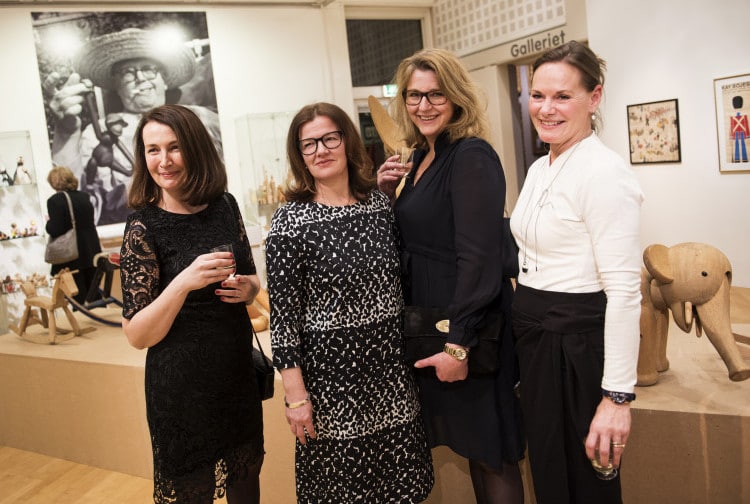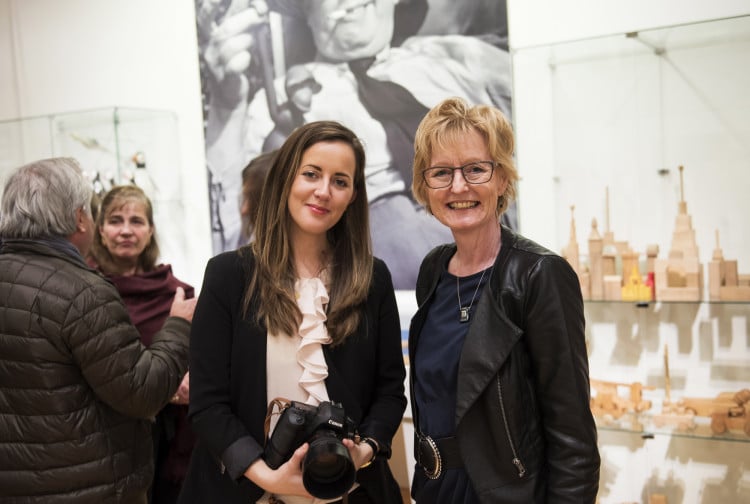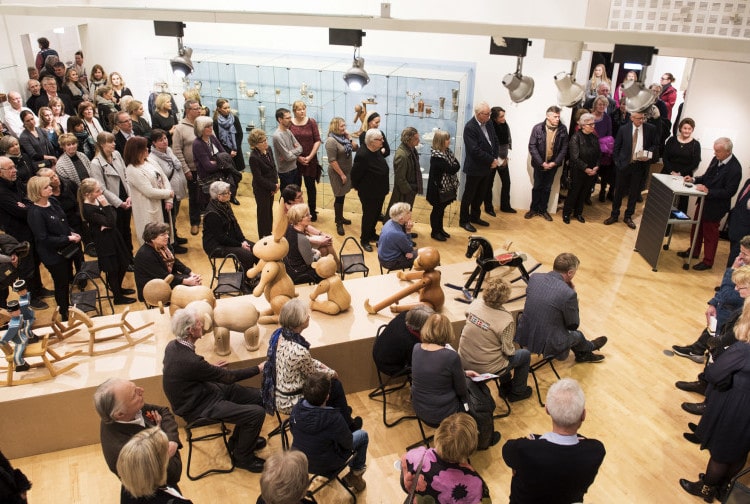Kay Bojesen (1886 - 1958) - Danish design for modern life
Kay Bojesen (1886-1958) was an artist, craftsman, designer, silversmith and merchant.
Chronologically, the development took place in the opposite direction. He started as a merchant apprentice and ended up as an artist. He was what the Americans wanted to call "an artist as a man of the world." In recent times, there is talk that visual artists must also be entrepreneurs and take into account production life and market power. In a democracy, art is also an industry, something a Danish designer like Kay Bojesen was early on to realize.
Kay Bojesen was a silver apprentice with Georg Jensen himself, and he is seen by some as Jensen's heir. Bojesen's long career coincides with the heyday of Danish architecture and design. Among his colleagues and close friends are Arne Jacobsen, Hans Wegner, Poul Henningsen, Kay Fisker, Axel Salto and Finn Juhl. All of these, which together with Swedes, Finns and the occasional Norwegian, form the core of the concept Scandinavian Design, created a radically new form in collaboration with production companies and sales links. The sky-high level of Danish furniture art in the middle of the 20th century is a result of many small carpentry companies where the level of craftsmanship was very high. And in order to sell to a general market, you needed marketing through exhibitions and points of sale. Bojesen was also a pioneer in exhibition technology, with paintings and environments for the objects.
Some of these exhibition and sales venues have become legendary. The Permanente who lived in Vesterportgården in the middle of Copenhagen between 1931 and 1981 came about after an idea conceived by Bojesen and director of Holmegaard glassworks, Christian Grauballe. Another legendary address in Copenhagen was Kay Bojesen's workshop and outlet in Bredegade 47, which he opened in 1935 and which was run by his widow after 1958. Kay Bojesen was a very social man, who also made contacts internationally, not least in the modern design environment in the United States. As the son of the director of Gyldendals Forlag, he was early aware of the artistic practice's relationship to the economy and the development of society. Therefore, Bojesen became involved in association life and he wrote pamphlets and readers' articles in the newspapers when he thought that a new reflection on the role, significance and conditions of the craft should come to the public's attention. His artistic profile was characterized by professional seriousness, uncompromising quality requirements, commitment and life-affirming profits and humor.
Bojesen started his artistic career as a silversmith. In the beginning, he created objects in what the Danes call "beautiful wood", the elegant style that with us is called Art Nouveau. But as a modern man, Kay Bojesen quickly realized that a simplification of form and a removal of exterior ornament fit better with the new, simpler, more democratic lifestyle. As early as the 1930s, he designed and executed teapots and cutlery in a functionalist style. Bojesen was a lifelong supporter of silver as a beautiful material, which did not need to be polished all the time and which was only refined by scratches after use. Daily use gave patina and beauty to the silver. But material prices and rationing in connection with the war meant that other materials had to, and thus could, be chosen. The pragmatics of this we see the cutlery Grand Prix from 1938. Bojesen designed and made in silver a set of knife, spoon and fork. It was completely ornamental, but heavy and good hand, and good to eat with. He was very concerned with the use, which should be comfortable. But just as much that it should be beautifully done and thus a delight to the eye as well. The cutlery won first prize (Grand Prix) at the design triennial in Milan. In the early 1950s, this cutlery was put into mass production under the name Grand Prix, but now in stainless steel.
With small and expensive silver, Bojesen had to devise a new material for his bowls and dishes. The choice fell on three - which had such a magnificent tradition in modern, Danish furniture design. He collaborated i.a. with Finn Juhl, who designed some of the models; others were designed by Bojesen himself. When there was a shortage of exotic woods, he used Danish, such as oak and beech. Bojesen also used new materials such as melamine and bakelite.
Kay Bojesen was an originator of ideas. He let events in daily life and society inspire. Some of his design classics are related to toys, a field in which he was a true pioneer. The famous "Guards", the guards, came in connection with the popular King Christian X's 70th birthday in 1940. The equestrian parade was to take place outside the shop in Bredegade, and Bojesen made four 1 meter high guards painted in pure colors set up outside the shop as a guard of honor for the king. This figure, with red, blue and white clothes and the black bearskin hat on top, has become an international design classic. Likewise, the charming and rare puffin, what the Danes call the «puffin». It was made as part of a Greenlandic environment in connection with the Danish royal couple's visit to Greenland in the early 1950s. It could be single events like this, of course widely covered in the mass media, or larger cultural movements that inspired Bojesen. His work is therefore intimately connected with his time and the breaks in it.
That he should work so much with toys is of course connected with modern pedagogy. The 20th century is called "The Century of the Child" [2]. The new pedagogy in both Europe and the USA - typically the places of impact for Bojesen's art - was called "child centered". Bojesen's toys were an expression of his appreciation of this new trend, and its early success was linked to the large spread of new kindergartens in Denmark, places where one wanted modern quality toys. But his toys were never dry and didactic; there was always a smile and wonder. Again, he was ruthless in his quality demands. The toy is based on some simple basic shapes, the materials could be untreated wood or painted in pure colors. Studying Kay Bojesen's drawings of the animals provides insight into his functionalist creativity. Simple geometric shapes could be combined into different animals. And he kept thinking about the syntax / relationships between the parts, so that they could be produced efficiently and put together in a way that made long-term use both comfortable and possible. Form and material should be equally durable, a view formulated by the architect Adolf Loos as early as 1908.
The toy became relatively expensive, but also durable. He tested out toys and only continued to produce what the children themselves spontaneously resorted to. It went in dolls' carriages, cars, rocking horses, farms, ships, Norwegian skiers, buses, small detached houses, harbors, train sets, a skyscraper town, etc .: City and country, hand in hand; outside and at home were equally natural parts of it all. The toy was not only to vary and experiment with, it was also something that opened the child's mind to a larger world.
In the modern, urban western world, the botanical gardens and zoos are visiting exotic miniature worlds, far away. Bojesen enjoyed visiting the zoo all his life, and among his most important and most famous works are the monkey, the zebra, the elephant, the hippopotamus, the "puffin", the bear and the polar bear - none of them "typically Danish". In addition to the silver, it is the toy that has made Kay Bojesen a world name. The toy became his niche in the design world known as Scandinavian Design.
The exhibition in Drammens Museum is a collaboration with Sofienholm exhibition venue in Lundby outside Copenhagen, Rosendal Design Group, which currently produces Kay Bojesen design, and the Bojesen family.
Åsmund Thorkildsen
museum director
[1] The term is taken from the artist Allan Kaprow's famous essay, "The Artist as a Man of the World", written in 1964. Kaprow referred to what today says that the artist must think and act as an entrepreneur.
[2] The title of a book by Swedish Ellen Kay published in 1900. The book gained unique international significance for pedagogy and the child's more independent place in the family, the classroom and society.







